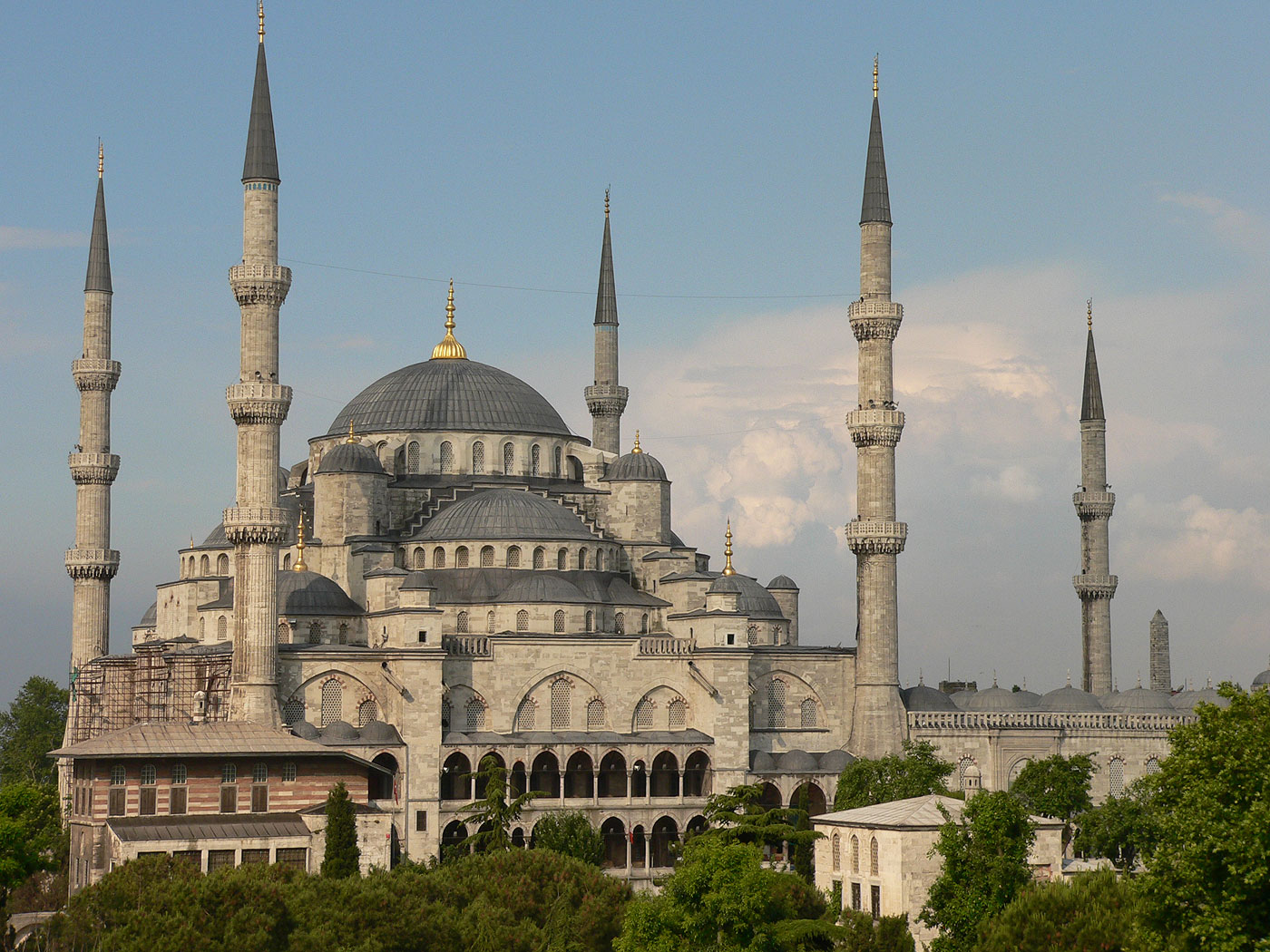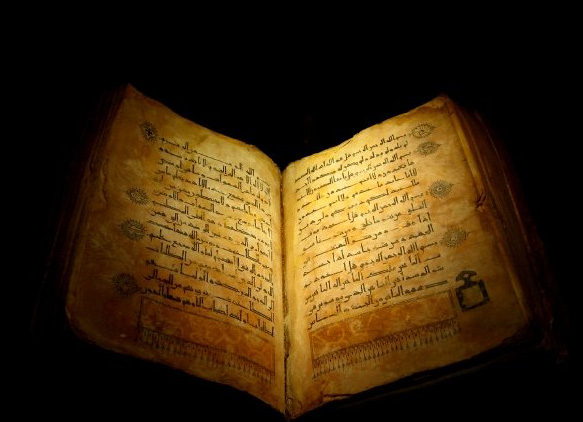Islamic Golden Age History
Source(google.com.pk)
The Islamic Golden Age is an Abbasid historical period beginning in the mid 8th century lasting until the Mongol conquest of Baghdad in 1258.[1] The Islamic Golden Age was inaugurated by the middle of the 8th century by the ascension of the Abbasid Caliphate and the transfer of the capital from Damascus to Baghdad.[2] The Abbasids were influenced by the Qur'anic injunctions and hadith such as "the ink of a scholar is more holy than the blood of a martyr" that stressed the value of knowledge.[2] During this period the Arab world became an intellectual center for science, philosophy, medicine and education; the Abbasids championed the cause of knowledge and established the House of Wisdom in Baghdad, where both Muslim and non-Muslim scholars sought to translate and gather all the world's knowledge into Arabic.[2] Many classic works of antiquity that would otherwise have been lost were translated into Arabic and Persian and later in turn translated into Turkish, Hebrew and Latin.[2] During this period the Arab world was a collection of cultures which put together, synthesized and significantly advanced the knowledge gained from the ancient Roman, Chinese, Indian, Persian, Egyptian, Greek, and Byzantine civilizations.[2] They also used the decimal system and began the use of Algebra in order to solve complex mathematical problems.
Contents [show]
Knowledge culture [edit]
With a new, easier writing system and the introduction of paper, information democratized to the extent that, probably for the first time in history, it became possible to make living from simply writing and selling books.[3] The use of paper spread from China into Muslim regions in the eighth century CE, arriving in Spain (and then the rest of Europe) in the 10th century CE. It was easier to manufacture than parchment, less likely to crack than papyrus, and could absorb ink, making it difficult to erase, making it ideal for records. Islamic paper makers devised assembly-line methods of hand-copying manuscripts to turn out editions far larger than any available in Europe for centuries.[4] It was from Islam that the rest of the world learned to make paper from linen.[5]
The government heavily patronized scholars. The money spent on the Translation Movement for some translations is estimated to be equivalent to about twice the annual research budget of the United Kingdom’s Medical Research Council.[6] The best scholars and notable translators, such as Hunayn ibn Ishaq, had salaries that are estimated to be the equivalent of professional athletes today.[7]
Islamic art [edit]
Marquetry and tile-top table from the year 1560.
Main article: Islamic art
The golden age of Islamic (and/or Muslim) art lasted from 750 to the 16th century, when ceramics (especially lusterware), glass, metalwork, textiles, illuminated manuscripts, and woodwork flourished.[citation needed] Manuscript illumination became an important and greatly respected art, and portrait miniature painting flourished in Persia. Calligraphy, an essential aspect of written Arabic, developed in manuscripts and architectural decoration. Calligraphy was developed because the Islamic religion did not allow paintings of human-beings.[citation needed]
Philosophy [edit]
In Al-Andalus, Ibn Rushd founder of the Averroism school of philosophy, was influential in the rise of secular thought in Western Europe.
Main article: Islamic Philosophy
Ibn Rushd and Ibn Sina played a major role in saving the works of Aristotle, whose ideas came to dominate the non-religious thought of the Christian and Muslim worlds. They would also absorb ideas from China, and India, adding to them tremendous knowledge from their own studies.[citation needed] Ibn Sina and other speculative thinkers such as al-Kindi and al-Farabi combined Aristotelianism and Neoplatonism with other ideas introduced through Islam.[citation needed] Avicenna argued his famous "Floating Man" thought experiment, concerning self-awareness, where a man prevented of sense experience by being blindfolded and free falling would still be aware of his existence.[8]
Arabic philosophic literature was translated into Latin, and Ladino, contributing to the development of modern European philosophy. Sociologist-historian Ibn Khaldun, Carthage citizen Constantine the African who translated Greek medical texts and Al-Khwarzimi's collation of mathematical techniques were important figures of the Golden Age.[citation needed] The Islamic golden age also allowed for the flourishing of non-Muslim philosophers. The Jewish philosopher Moses Maimonides who lived in Andalusia is an example.[citation needed]
Sciences [edit]
Main article: Islamic science
A manuscript written during the Abbasid Era.
Girih tiles arranged in Quasicrystal order is an example of the advancements that had taken place in the Islamic Golden Age.
Many notable lsIamic and non-lsIamic scientists lived and practiced during the Arab Golden Age.[citation needed] Among the achievements of Muslim scholars during this period were the development of trigonometry into its modern form (simplifying its practical application to calculate the phases of the moon), advances in optics, and advances in astronomy.[citation needed]
Medicine [edit]
Main article: Islamic medicine
The eye according to Hunain ibn Ishaq. From a manuscript dated circa 1200.
Medicine was a central part of medieval Islamic culture. Responding to circumstances of time and place, Islamic physicians and scholars developed a large and complex medical literature exploring and synthesizing the theory and practice of medicine. (from the National Library of Medicine digital archives)
Islamic medicine was built on tradition, chiefly the theoretical and practical knowledge developed in Greece, Rome, and Persia. For Islamic scholars, Galen and Hippocrates were pre-eminent authorities, followed by Hellenic scholars in Alexandria. Islamic scholars translated their voluminous writings from Greek into Arabic and then produced new medical knowledge based on those texts. In order to make the Greek tradition more accessible, understandable, and teachable, Islamic scholars ordered and made more systematic the vast and sometimes inconsistent Greco-Roman medical knowledge by writing encyclopaedias and summaries. (from the National Library of Medicine digital archives)
Pagan Latin and Greek learning was viewed suspiciously in Christian early medieval Europe, and it was through 12th century Arabic translations that medieval Europe rediscovered Hellenic medicine, including the works of Galen and Hippocrates. Of equal if not of greater influence in Western Europe were systematic and comprehensive works such as Avicenna's The Canon of Medicine, which were translated into Latin and then disseminated in manuscript and printed form throughout Europe. During the fifteenth and sixteenth centuries alone, The Canon of Medicine was published more than thirty-five times. (from the National Library of Medicine digital archives)
In the medieval Islamic world, hospitals were built in most major cities; in Cairo for example, the Qalawun hospital had a staff that included physicians, pharmacists, and nurses.
Commerce and travel [edit]
Introductory summary overview map from al-Idrisi's 1154 world atlas (note that South is at the top of the map).
Apart from the Nile, Tigris and Euphrates, navigable rivers were uncommon, so transport by sea was very important. Navigational sciences were highly developed, making use of a rudimentary sextant (known as a kamal). When combined with detailed maps of the period, sailors were able to sail across oceans rather than skirt along the coast. Muslim sailors were also responsible for reintroducing large three masted merchant vessels to the Mediterranean. The name caravel may derive from an earlier Arab boat known as the qārib.[9]
Architecture and engineering [edit]
The Great Mosque of Kairouan (also known as the Mosque of Uqba), founded in 670, dates in its present state from the 9th century; it is one of the masterpieces of Islamic architecture.[10] The Great Mosque of Kairouan is located in the city of Kairouan, in Tunisia.
The Sultan Ahmed Mosque in Istanbul
Isometric laser scan data image of the Bab al-Barqiyya Gate in the 12th century Ayyubid Wall. This fortified gate was constructed with interlocking volumes that surrounded the entrant in such a way as to provide greater security and control than typical city wall gates.
Main article: Islamic architecture
The Great Mosque of Kairouan (in Tunisia), the ancestor of all the mosques in the western Islamic world,[11] is one of the best preserved and most significant examples of early great mosques. Founded in 670, it dates in its present form largely from the 9th century.[12] The Great Mosque of Kairouan is constituted of a three-tiered square minaret, a large courtyard surrounded by colonnaded porticos and a huge hypostyle prayer hall covered on its axis by two cupolas.[11]
The Great Mosque of Samarra in Iraq was completed in 847. It combined the hypostyle architecture of rows of columns supporting a flat base above which a huge spiralling minaret was constructed.
The beginning of construction of the Great Mosque at Cordoba in 785 marking the beginning of Islamic architecture in Spain and Northern Africa. The mosque is noted for its striking interior arches. Moorish architecture reached its peak with the construction of the Alhambra, the magnificent palace/fortress of Granada, with its open and breezy interior spaces adorned in red, blue, and gold. The walls are decorated with stylized foliage motifs, Arabic inscriptions, and arabesque design work, with walls covered in glazed tiles.
Another distinctive sub-style is the architecture of the Mughal Empire in India in the 16th century. Blending Islamic and Hindu elements, the emperor Akbar constructed the royal city of Fatehpur Sikri, located 26 miles west of Agra, in the late 1500s.
Pictures Photos Pics 2013

Pictures Photos Pics 2013
Pictures Photos Pics 2013
Pictures Photos Pics 2013

Pictures Photos Pics 2013

Pictures Photos Pics 2013
Pictures Photos Pics 2013
Pictures Photos Pics 2013
Pictures Photos Pics 2013

Pictures Photos Pics 2013
Pictures Photos Pics 2013
No comments:
Post a Comment